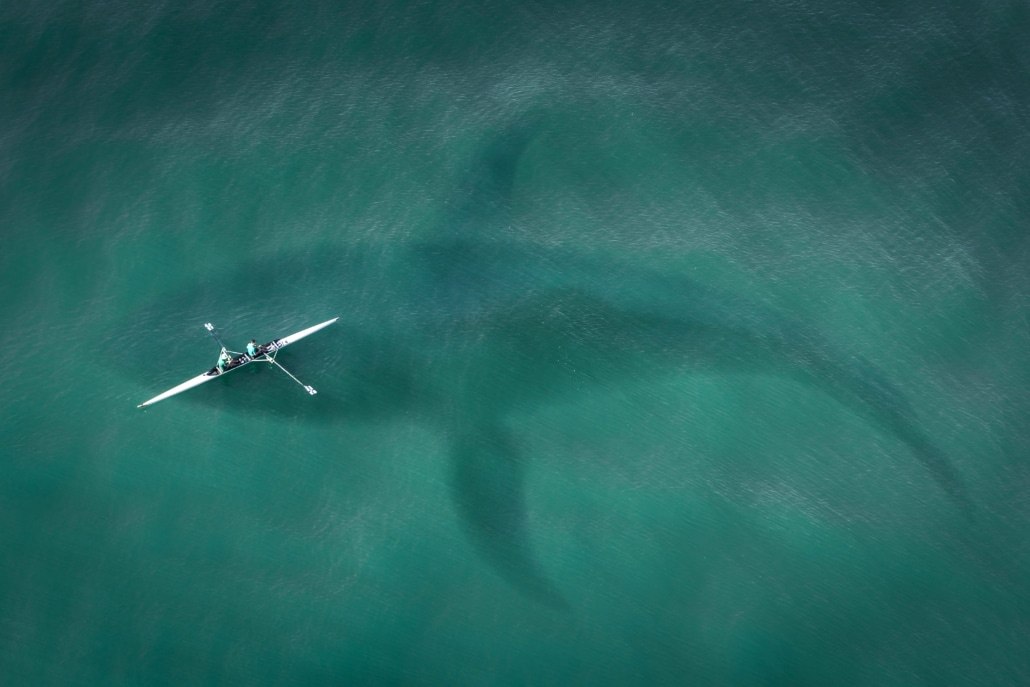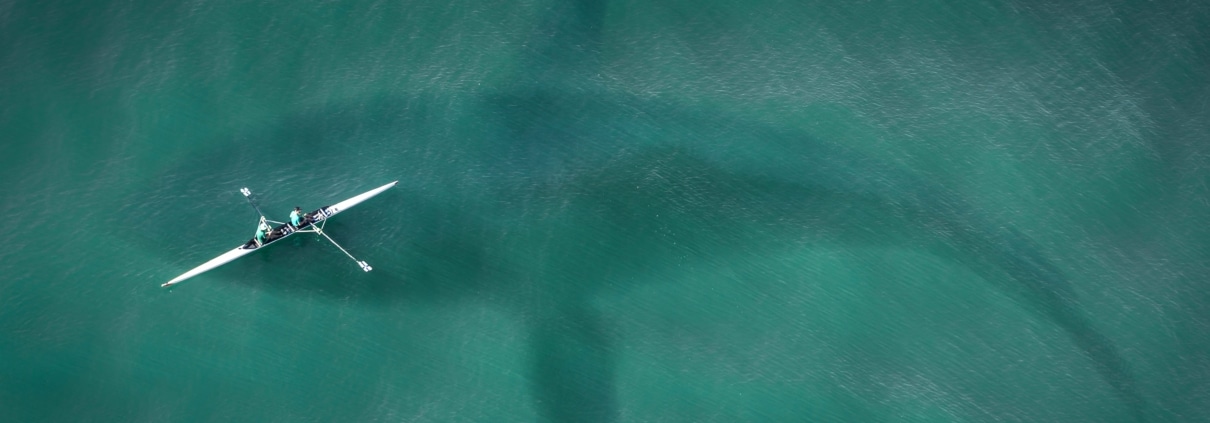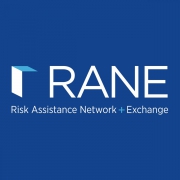Good Risk Culture Starts with an Open Conversation

One of the riskiest decisions in my life, I still tend to think, was going to Columbia University’s Graduate School of Journalism. It wasn’t going to be cheap. I’d have to work off tens of thousands of dollars of student loan debt. And, with the journalism industry being what it was—business models for media outlets haven’t improved much since—there was no guarantee that I’d get a job, let alone a stable one, doing what I wanted to do. “How shameful it would be,” I thought to myself, “to have to go back home if things don’t work out.”
I ruminated on that moment recently, while reading You Are What You Risk, Michele Wucker’s new book. It struck some personal chords, as I mentioned, and affirmed my sense of what ultimately moved me to take the risk of going to New York. The subtitle of You Are What You Risk, “The New Art and Science of Navigating an Uncertain World,” captures Wucker’s aim—explaining, with a journalist’s eye for story and clarity, how to think about risk, act around it, and pay attention to the feelings various kinds of risks arouse, in oneself and in others. What we find risky—on a personal, organizational, and societal level—reveals what we value.
Risk is all about what you feel you have to lose or gain, which is rooted in your values and your perceptions.
In my case, after speaking with a mentor, I realized it was much more of a risk to stay—at home in a southern California suburb—and possibly forever regret missing my chance to pursue my passion. Everything’s worked out, fortunately. I’m in a lot of debt, but am steadily paying it off. The adventure, and the people I met along the way (like my wife) made the risk worth taking.
But what does that say about who I am? That’s where I wanted to start in my chat with Wucker, who along with being a Guggenheim Fellow is a former think tank and media executive, and author of the bestselling book The Gray Rhino, about the obvious risks we’re prone to neglect. We also discussed, among other things, how COVID-19 spotlights our relationship with risk, “risk empathy,” as well as what a good “risk culture” looks like.
Your title plays off some well-known sayings, like “You are what you eat,” and “We are what we repeatedly do.” One’s a comment on diet, the other habit-formation. They’re both pretty intuitive. “You are what you risk” is less so. Why are we what we risk? Can you say why you think this concept is central to who people—and what organizations—end up becoming?
Taking a risk is making a choice. Each person reportedly makes 35,000 or so choices every single day, including what you eat and what habits you create, follow, and break. These choices say so much about who each person is and what each organization and society values. Understanding what these choices convey, and the often-unconscious influences on them, helps us to understand key parts of our identities: our sense of purpose and agency, our relationships, how emotional or stoic we are, the way we approach problems, and ultimately what we care about most. That’s why looking at all your decisions as risk management, understanding what you’re willing to risk and why, and putting those insights to work, is central to your identity and, ultimately, your success as a person, an organization, or a society.
The impact of COVID-19 shows up a lot in your book, You Are What You Risk. Reading it, I got the sense that you regard the pandemic as an almost perfect mechanism for revealing how individual people, companies, and cultures relate to—or understand—risk, or what is risky. Has the pandemic done a good job of getting us, on a personal and societal level, to more explicitly reckon with risk?
The pandemic certainly has awakened many people to the importance of explicitly reckoning with risk. Each one of us has had to make risk calculations for so many activities that we used to take for granted, and we’re re-adjusting now that widespread vaccinations have changed the risk equation again. Those calculations revealed the wide range in people’s attitudes toward risk to themselves and others.
Now, “we” is a tricky concept since everyone responds to risks, uncertainty, and shocks in their own way, which is part of my argument in You Are What You Risk. But the hundreds of mentions of the gray rhino in media around the world suggests that many people are looking more seriously at the obvious, highly probable risks we face and trying to figure out how to do a better job at facing them. As factory closures and rapid changes in consumption patterns created widespread shortages, for example, the pandemic revealed the risks inherent in “just-in-time” supply-chain management, which businesses have had to rethink. And the varying responses of governments to the pandemic revealed a lot about what risks they were or were not willing to take.
“In an increasingly uncertain world,” you write, “too many people have lost the ability to accept that a degree of uncertainty remains in most matters, and instead have fallen into a toxic relationship with risk.” How does a relationship with risk become toxic? And what gives you the sense that people nowadays, particularly newer generations, are more and more relating to risk in bad ways?
Socially, so many societies and helicopter parents over-protect children and in the process miss teaching key risk taking skills—and then adults try to re-create risk experiences through extreme sports, escape rooms, and other pastimes. Nevertheless, not all members of newer generations are relating to risk in bad ways. Some of the research and interviews in the book show that Millennials and Gen Z are aware of risk in general and of specific risks in ways that my generation (Gen X) and earlier ones may not have been. Some of that is very positive—like the college student I interviewed who thought about risk trade-offs in a way that I wish I had known how to do when I was her age.
At the same time, societies are getting risk wrong in so many ways by encouraging the wrong kinds of risks and failing to encourage the right ones. Governments subsidize fossil fuels, which leaves taxpayers on the hook twice: first for the subsidies and then for the health, climate, and other externalities caused by pollution and greenhouse-gas emissions. Companies with the greatest potential to cause widespread damages can borrow money much more cheaply than small businesses in communities where their success can create needed jobs and other positive social domino effects.
Subscribe to the Ethical Systems newsletter
I was reminded, reading your book, of the importance of people or organizations having “skin in the game” when they’re working toward some outcome, or overseeing some process or policy. The idea is that if you have little or no personal stake in an outcome, then you’re likely to not ensure it’s a good one. Do you see that as a positive form of risk? What are ways companies can have more “skin in the game” with respect to their stakeholders?
Risk is all about what you feel you have to lose or gain, which is rooted in your values and your perceptions. So naturally, if you have nothing at stake, you’re not going to waste your time pursuing that particular outcome. The shareholder capitalism advocated by Milton Friedman defined skin in the game narrowly, as shareholders’ interests. Newer conversations see shareholder capitalism and a broader stakeholder capitalism not only as not being mutually exclusive, but as complementing each other. When a company pays more attention to supporting its employees, it becomes more productive which, in turn, is good for shareholders. When it limits potential damage to the environment and community, it benefits through a better reputation at a time when intangible assets like reputations add more to a company’s value than ever.
Complex systems dynamics come into play here and broaden the universe of stakeholders, or entities that your activities affect for better or for worse—and who, in turn, can benefit or harm your company. This creates connections people might not have seen in the past: For example, investments in fossil fuel companies can hurt investments in real estate, municipal bonds, and financial services. And ultimately, as more and more people see that, investments in fossil fuel companies become a loss-making proposition.
What do you mean when you say that the emotion-reason divide in how people relate to risk “separates the premodern from the modern from the postmodern”?
The sociologist Ulrich Beck makes this premodern-modern-postmodern distinction in his influential work on “risk society.” That is the notion that humans have moved from pre-modern societies, where the greatest risks are from nature, to a modern world where humans cause many of the biggest risks. He wanted to push us to a new “second modernity” where people are aware of the feedback loop between our actions and increasing risks and, thus, to develop new political and social structures to address those risks. Beck saw some of the greatest risks as being global, so proposed a new global cosmopolitan vision for counteracting human-caused risks.
You spotlight a small company called One Complete Business, saying it’s a “shining example” of the good that can come from understanding risk dynamics. What are some of those dynamics, and what should larger companies looking to create a “good risk culture” take from One Complete Business’ experience?
The owners of the business, Barb Morgan-Browning and Marc Hertz, are both self-aware about how their personalities and ways of doing things affect the risk decisions each of them is likely to make and why, and how those in turn affect their business and clients. They recognize their differences as strengths, not weaknesses. Because they share the same values and have processes in place to resolve conflicts in risk-taking, they have a great formula that helps them to work things out.
Creating a good risk culture starts with an open conversation and empathy for other team members. Obviously, it’s harder to do that in a big company than in a small one. But the simple act of paying attention to employees’, partners’, and clients’ relationships with risk can help you to identify strengths and weaknesses in your decisions and strategy. This might include questions like “What’s the biggest risk you’ve ever taken?” in recruiting or team building sessions; or it could be presenting different risk scenarios for discussion. It can inform hiring and promotions and even which team members are assigned to work with which clients. Creating a good risk culture means not just thinking about risks themselves but rather about your ability to respond effectively.
What is risk empathy, and what are some cultural or structural changes companies can make to foster it?
Risk empathy is the ability to understand someone else’s risk fingerprint, including what it takes to make them more comfortable with “good” risk-taking—that is, pursuing opportunities—and staying away from “bad” risks that unnecessarily put them and the organization at risk. It means not making assumptions about someone’s relationship with risk based on their gender or demographic. Risk empathy can help you avoid the damage that risk stereotypes can do, like affecting who gets promoted or not. It means understanding how your team’s risk fingerprints align with the direction you want the company to go, and changing the dynamic if, say, your people see the biggest risk as not doing things “the way we’ve always done them” when the biggest risk in reality is not changing how things are done. If you need to innovate more, risk empathy involves finding out what makes your people more comfortable in being more creative and taking more “good risks.”
I have the impression that people often self-select into careers or departments that are naturally compatible with their attitude toward risk.
Sure. But often they are not as aware as they could be about how these traits can help them or hold them back, and how they can complement weak areas and optimize their strengths.
Brian Gallagher is the Communications Director at Ethical Systems. Follow him on Twitter @bsgallagher.




